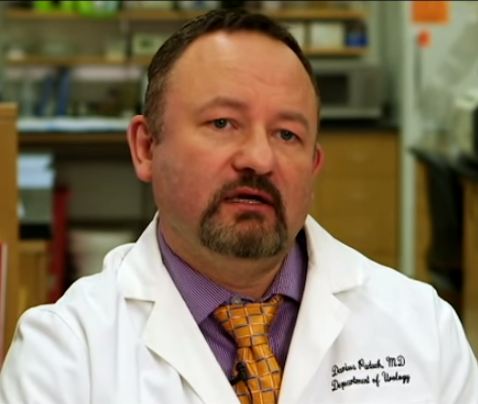Video: Hypogonadism and testosterone-enhancing therapy on alkaline phosphatase and BMD
The effect of hypogonadism and testosterone-enhancing therapy on alkaline phosphatase and bone mineral density
OBJECTIVE
To evaluate the relationship of testosterone-enhancing therapy on alkaline phosphatase (AP) in relation to bone mineral density (BMD) in hypogonadal men.
PATIENTS AND METHODS
Retrospective review of 140 men with testosterone levels of <350 ng/dL undergoing testosterone-enhancing therapy and followed for 2 years. Follicle-stimulating hormone, luteinising hormone, free testosterone, total testosterone, sex hormone binding globulin, calcium, AP, vitamin D, parathyroid hormone, and dual-energy X-ray absorptiometry (DEXA) scans were analysed. A subgroup of 36 men with one DEXA scan before and one DEXA 2 years after initiating treatment was performed.
RESULTS
Analysis of the relationship between testosterone and AP at initiation of therapy using stiff linear splines suggested that bone turnover occurs at total testosterone levels of <250 ng/dL. In men with testosterone levels of <250 ng/dL, there was a negative correlation between testosterone and AP (R2 = −0.347, P < 0.001), and no correlation when testosterone levels were between 250 and 350 ng/dL. In the subgroup analysis, the mean (sd) testosterone level was 264 (103) ng/dL initially and 701 (245), 539 (292), and 338 (189) ng/dL at 6, 12, and 24 months, respectively. AP decreased from a mean (sd) of 87 (38) U/L to 57 (12) U/L (P = 0.015), 60 (17) U/L (P < 0.001), and 55 (10) U/L (P = 0.03) at 6, 12, and 24 months, respectively. The BMD increased by a mean (sd) of 20 (39)% (P = 0.003) on DEXA.
CONCLUSION
In hypogonadal men, the decrease in AP is associated with an increase in BMD on DEXA testing. This result suggests the use of AP as a marker of response to therapy.



